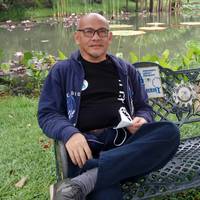
Laurel Heydir
From 1987 through 2023, I served as a faculty member at the Department of Constitutional Law, Universitas Sriwijaya (UNSRI), located in South Sumatra Province, Indonesia. I taught several courses, including Indonesian Constitutional Law [and Political System], Legislative Drafting, Cultural Anthropology, and Foreign Legal Terminology, on both the Palembang and Indralaya campuses.
Besides teaching, I have occasionally been involved in several initiatives administered by the Government of Indonesia (GOI), the Indonesian Parliament (MPR, DPR, and DPD), and international agencies operating in Indonesia. [My professional experiences are listed in my CV.]
Concerning my education, I graduated from the Universitas Gadjah Mada Law School (Sarjana Muda Hukum in 1984 and Sarjana Hukum in 1986). I attended the University of Kentucky and earned an MA from the UK Department of Anthropology in 1993. I enrolled in a PhD program at the University of Michigan School of Natural Resources and Environment in 1994 (and resigned in 1996 because my sponsorship did not materialize).
My main interest is observing state-society relations. This academic theme allows me to employ both of my educational backgrounds [in law and anthropology]. Through a legal-anthropological perspective, I have gained a more comprehensive understanding of the nature of conflicts over natural resource utilization in Indonesia.
Supervisors: Prof. Soehino & Toto Pandoyo (UGM, Law School), Prof. John van Willigen (UK, Dept. of Anthropology), & Prof. Patrick C. West & Stephen R. Brechin (UM, and SNRE)
Address: Jakarta, Indonesia
Besides teaching, I have occasionally been involved in several initiatives administered by the Government of Indonesia (GOI), the Indonesian Parliament (MPR, DPR, and DPD), and international agencies operating in Indonesia. [My professional experiences are listed in my CV.]
Concerning my education, I graduated from the Universitas Gadjah Mada Law School (Sarjana Muda Hukum in 1984 and Sarjana Hukum in 1986). I attended the University of Kentucky and earned an MA from the UK Department of Anthropology in 1993. I enrolled in a PhD program at the University of Michigan School of Natural Resources and Environment in 1994 (and resigned in 1996 because my sponsorship did not materialize).
My main interest is observing state-society relations. This academic theme allows me to employ both of my educational backgrounds [in law and anthropology]. Through a legal-anthropological perspective, I have gained a more comprehensive understanding of the nature of conflicts over natural resource utilization in Indonesia.
Supervisors: Prof. Soehino & Toto Pandoyo (UGM, Law School), Prof. John van Willigen (UK, Dept. of Anthropology), & Prof. Patrick C. West & Stephen R. Brechin (UM, and SNRE)
Address: Jakarta, Indonesia
less
Related Authors
Albert Ruda Gonzalez
Universitat de Girona
Remo Caponi
University of Cologne
Armando Marques-Guedes
UNL - New University of Lisbon
Giacomo Delledonne
Scuola Superiore Sant'Anna
Thongchai Winichakul ธงชัย วินิจจะกูล
University of Wisconsin-Madison
Nurşen Gürboğa
Marmara University
Mauro Grondona
University of Genova
Cosmin Sebastian Cercel
Ghent University
Andrea Acri
Ecole Pratique des Hautes Etudes
Nicola Lupo
LUISS Guido Carli
InterestsView All (6)
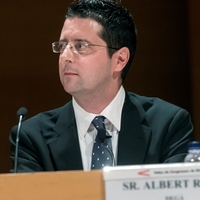


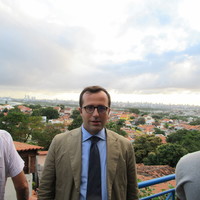
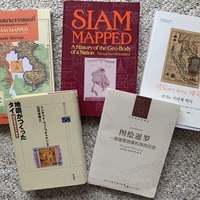

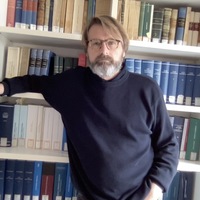


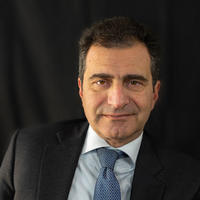
Uploads
Articles by Laurel Heydir
This exposure is intended to obtain an overview on the development of the Indonesian constitutional law from time to time, which is following the development of the State of Indonesia itself. In other words, this outline is intended to provide information which will illustrate the constitutionalism in Indonesia--in the post Dutch's Colonial era.
However, this is a working draft that will be frequently modified to provide a brief but comprehensive presentation of the development of the Indonesian constitutionalism.
[An updated version (as of 8 March 2019)]
- The first constitution is popularly called the "UUD 1945" (the Constitution of 1945).
[The UUD of 1945 was ratified by the PPKI (the Panitia Persiapan Kemerdekaan Indonesia/the Preparatory Committee for the Independence of Indonesia) on the 18th of August 1945. The official name of this constitution is "Undang-Undang Dasar Negara Republik Indonesia Tahun 1945" (the Constitution of the State of the Republic of Indonesia of the Year 1945)]
- The second constitution is called the "Konstitusi RIS" (the Konstitusi Republik Indonesia Serikat/the Constitution of the Republic of the United States of Indonesia).
[This constitution of the United States of Indonesia resulted from the Round Table Conference (held in The Hague on the 23rd of August through the 2nd of November 1949). The Constitution was ratified by both Parliaments (Indonesia and the Netherlands) and effective in Indonesia as of the 27th of December 1949].
- The third constitution is the "UUDS 1950" (the Undang-Undang Dasar Sementara Tahun 1950/the Provisional Constitution of 1950).
[The UUDS of 1950 came into force on the 17th of August 1950, replacing the "Konstitusi RIS" and re-establishing the unitary state of Indonesia].
> Since the Konstituante facing a deadlock in the making of a new constitution to replace the UUDS 1950, the UUD 1945 was re-imposed through a Presidential Decree (which was dated on the 5th of July 1959).
- The fourth/the current Constitution.
[The UUD 1945 has been amended for four times by the MPR (Majelis Permusyawaratan Rakyat/the People's Consultative Assembly) during the MPR's General Session of the year 1999 and the MPR's Annual Sessions of the years 2000, 2001 and 2002].
> It is probably confusing for some people because the MPR continues using the same name like it was to this post-amended constitution, i.e. the "Undang-Undang Dasar Negara Republik Indonesia Tahun 1945."
Among the most important changes to this Constitution are:
- The downgrading of the MPR -- from its superior level (as the implementer of the popular sovereignty) to the same level to the other primary state institutions -- a shift in organisational perspective from a structural approach (i.e. hierarchical power relation) to a functional relation (i.e. checks and balances);
- The adoption of a direct presidential election -- replacing the election of the president and vice president by the MPR;
- The limitation of the presidential services -- for a maximum of two terms.
Tulisan ini membahas tentang sinkronisasi yang harus dilakukan antara aturan tentang Satuan Kredit Semester (SKS) dan Beban Belajar mahasiswa program sarjana (S1)--sebagai sebuah ilustrasi tentang aturan pendidikan tinggi yang perlu dibenahi.
Tulisan ringkas ini dimaksud untuk menyegarkan ingatan kita tentang posisi dan peran penyelenggara negara -- khususnya para wakil rakyat -- di negara demokrasi konstitusional semisal Republik Indonesia ...
Teaching Materials by Laurel Heydir
(1) Politik dan Disiplin Ilmu Politik
(2) Hubungan politik/Ilmu Politik dan hukum/Ilmu Hukum
(3) Negara sebagai organisasi politik
(4) Isme-isme di dunia (fokus pada kapitalisme dan sosialisme)
(5) Pemerintahan (bentuk dan klasifikasi)
(6) Konstitusi di beberapa negara (Inggris, AS dan Prancis)
(7) Pemisahan/pembagian kekuasaan/cabang-cabang kekuasaan negara
(8) HAM, demokrasi dan pemilu
Mata kuliah ini mulai diselenggarakan sejak diberlakukannya Kurikulum FH UNSRI Tahun 2017. Dalam alur proses pembelajaran, mata kuliah HTN Indonesia ditempuh oleh mahasiswa pada Semester 3—setelah mahasiswa menempuh mata kuliah HTN (pada Semester 2) dan mata kuliah Ilmu Negara (pada Semester 1).
Terlampir files Deskripsi Mata Kuliah HTN Indonesia dan bahan-bahan penunjang perkuliahan lainnya.
PS: Terdapat Deskripsi Mata Kuliah HTN Indonesia Tahun Ajaran (TA) 2018/2019 (perkuliahan pertama HTN Indonesia) yang diperbarui dengan Deskripsi Mata Kuliah HTN Indonesia TA 2019/2020.
~ Beberapa versi SAP IPU (Satuan Acara Perkuliahan Ilmu Perundang-undangan)
~ Inventarisasi Topik Kajian IPU
~ Ikhtisar Perkuliahan IPU
Book Sections by Laurel Heydir
The existence of adat comprises of three aspects that are interrelated with each other, namely the social aspect, i.e. adat (indigenous) community, the territorial aspect, i.e. adat (traditional) territory, and the legal aspect i.e. adat (customary) law. The problem is that each of these aspects is administered by different government sectors. It is said to be problematic because coordination, even communication, between sectors in Indonesia is often constrained by what is called 'ego-sectoral' (group spirit). So the government often seems incompetent in anticipating something that needs to be responded to in an integrated manner.
Furthermore, even though adat community is constitutionally eligible for their traditional rights to utilize forest resources within their traditional territorial area, it is found in the field the changes of socio-cultural values which gradually but surely converting adat community from a simple communal life to a more individualistic and materialistic lifestyles which making them more greedy in harvesting the forest resources. This change of way of life of the adat people poses a threat to forest conservation when the local adat wisdom to protect and maintain the sustainability of the forest is neglected by members of [the younger generation] adat community.
Keywords: Customary Forest, Conservation
[Note: my original writing is in Bahasa Indonesia. The English version is made by a translator]
This exposure is intended to obtain an overview on the development of the Indonesian constitutional law from time to time, which is following the development of the State of Indonesia itself. In other words, this outline is intended to provide information which will illustrate the constitutionalism in Indonesia--in the post Dutch's Colonial era.
However, this is a working draft that will be frequently modified to provide a brief but comprehensive presentation of the development of the Indonesian constitutionalism.
[An updated version (as of 8 March 2019)]
- The first constitution is popularly called the "UUD 1945" (the Constitution of 1945).
[The UUD of 1945 was ratified by the PPKI (the Panitia Persiapan Kemerdekaan Indonesia/the Preparatory Committee for the Independence of Indonesia) on the 18th of August 1945. The official name of this constitution is "Undang-Undang Dasar Negara Republik Indonesia Tahun 1945" (the Constitution of the State of the Republic of Indonesia of the Year 1945)]
- The second constitution is called the "Konstitusi RIS" (the Konstitusi Republik Indonesia Serikat/the Constitution of the Republic of the United States of Indonesia).
[This constitution of the United States of Indonesia resulted from the Round Table Conference (held in The Hague on the 23rd of August through the 2nd of November 1949). The Constitution was ratified by both Parliaments (Indonesia and the Netherlands) and effective in Indonesia as of the 27th of December 1949].
- The third constitution is the "UUDS 1950" (the Undang-Undang Dasar Sementara Tahun 1950/the Provisional Constitution of 1950).
[The UUDS of 1950 came into force on the 17th of August 1950, replacing the "Konstitusi RIS" and re-establishing the unitary state of Indonesia].
> Since the Konstituante facing a deadlock in the making of a new constitution to replace the UUDS 1950, the UUD 1945 was re-imposed through a Presidential Decree (which was dated on the 5th of July 1959).
- The fourth/the current Constitution.
[The UUD 1945 has been amended for four times by the MPR (Majelis Permusyawaratan Rakyat/the People's Consultative Assembly) during the MPR's General Session of the year 1999 and the MPR's Annual Sessions of the years 2000, 2001 and 2002].
> It is probably confusing for some people because the MPR continues using the same name like it was to this post-amended constitution, i.e. the "Undang-Undang Dasar Negara Republik Indonesia Tahun 1945."
Among the most important changes to this Constitution are:
- The downgrading of the MPR -- from its superior level (as the implementer of the popular sovereignty) to the same level to the other primary state institutions -- a shift in organisational perspective from a structural approach (i.e. hierarchical power relation) to a functional relation (i.e. checks and balances);
- The adoption of a direct presidential election -- replacing the election of the president and vice president by the MPR;
- The limitation of the presidential services -- for a maximum of two terms.
Tulisan ini membahas tentang sinkronisasi yang harus dilakukan antara aturan tentang Satuan Kredit Semester (SKS) dan Beban Belajar mahasiswa program sarjana (S1)--sebagai sebuah ilustrasi tentang aturan pendidikan tinggi yang perlu dibenahi.
Tulisan ringkas ini dimaksud untuk menyegarkan ingatan kita tentang posisi dan peran penyelenggara negara -- khususnya para wakil rakyat -- di negara demokrasi konstitusional semisal Republik Indonesia ...
(1) Politik dan Disiplin Ilmu Politik
(2) Hubungan politik/Ilmu Politik dan hukum/Ilmu Hukum
(3) Negara sebagai organisasi politik
(4) Isme-isme di dunia (fokus pada kapitalisme dan sosialisme)
(5) Pemerintahan (bentuk dan klasifikasi)
(6) Konstitusi di beberapa negara (Inggris, AS dan Prancis)
(7) Pemisahan/pembagian kekuasaan/cabang-cabang kekuasaan negara
(8) HAM, demokrasi dan pemilu
Mata kuliah ini mulai diselenggarakan sejak diberlakukannya Kurikulum FH UNSRI Tahun 2017. Dalam alur proses pembelajaran, mata kuliah HTN Indonesia ditempuh oleh mahasiswa pada Semester 3—setelah mahasiswa menempuh mata kuliah HTN (pada Semester 2) dan mata kuliah Ilmu Negara (pada Semester 1).
Terlampir files Deskripsi Mata Kuliah HTN Indonesia dan bahan-bahan penunjang perkuliahan lainnya.
PS: Terdapat Deskripsi Mata Kuliah HTN Indonesia Tahun Ajaran (TA) 2018/2019 (perkuliahan pertama HTN Indonesia) yang diperbarui dengan Deskripsi Mata Kuliah HTN Indonesia TA 2019/2020.
~ Beberapa versi SAP IPU (Satuan Acara Perkuliahan Ilmu Perundang-undangan)
~ Inventarisasi Topik Kajian IPU
~ Ikhtisar Perkuliahan IPU
The existence of adat comprises of three aspects that are interrelated with each other, namely the social aspect, i.e. adat (indigenous) community, the territorial aspect, i.e. adat (traditional) territory, and the legal aspect i.e. adat (customary) law. The problem is that each of these aspects is administered by different government sectors. It is said to be problematic because coordination, even communication, between sectors in Indonesia is often constrained by what is called 'ego-sectoral' (group spirit). So the government often seems incompetent in anticipating something that needs to be responded to in an integrated manner.
Furthermore, even though adat community is constitutionally eligible for their traditional rights to utilize forest resources within their traditional territorial area, it is found in the field the changes of socio-cultural values which gradually but surely converting adat community from a simple communal life to a more individualistic and materialistic lifestyles which making them more greedy in harvesting the forest resources. This change of way of life of the adat people poses a threat to forest conservation when the local adat wisdom to protect and maintain the sustainability of the forest is neglected by members of [the younger generation] adat community.
Keywords: Customary Forest, Conservation
[Note: my original writing is in Bahasa Indonesia. The English version is made by a translator]
The relationship between population and environment in the case of the deforestation in Pagaralam is modeled on pushing and pulling factors between the rural people and the protected forest areas as follows:
Some of the pushing factors include population density pressure, village lands scarcity, coffee production cycle, and farmers' materialistic desires. Meanwhile the pulling factors are ecological and geographical advantages (e.g. fertile soil, appropriateness for plantation, mountainous areas), large area of protected forest, and incentive of coffee market.
The deterrent factors include forest patrol, forcible operations, farmers' fears of being treated as criminals, and farmers' feeling of guilty for illegally cultivating the protected forest areas. Meanwhile the facilitating factors are inadequate forest preservation, unenforced forestry law (inconsistent legal process), and local government deficiencies (insensitivity of village-level administrators)
Note: This article is based on my MA-thesis from the University of Kentucky Department of Anthropology (1993). I presented a summary of my thesis at the Third International Conference of ICSE (International Consortium for the Study of Environmental Security), held at the Fletcher School of Law and Diplomacy, Tuft University (Boston/Medford, Massachusetts, USA) on May 31 - June 4, 1994. My presentation was then published as Chapter 6 in Baudot and Moomaw (editors), People and Their Planet: Searching for Balance, London—New York: MacMillan Press Ltd./St. Martin’s Press Inc. (ISBN: 0-333-68811-2).
[Catatan: Pada waktu program ini dilaksanakan, Indonesia berada pada ujung era Orde Baru--menjelang Reformasi. Pada waktu itu demokrasi belum menjadi wacana yang dikenal oleh publik, bahkan para anggota Dewan sekalipun belum familiar dengan gagasan apalagi praktek demokrasi. Tulisan ini masih berupa persuasi agar anggota Dewan mulai mempertimbangkan prinsip demokrasi dalam penyelenggaraan kegiatan mereka, khususnya dalam hal-hal yang berkaitan dengan penegakan hukum, lebih khusus lagi dalam pembentukan peraturan perundang-undangan]
[Note: I served as the field observer on a study led by Steven R. Brechin which sponsored by the UM/PED (the University of Michigan Population-Environment Dynamics) Project. The study results was presented at the International Symposium on Population-Environment Dynamics in Ann Arbor, Michigan on October 1-3, 1990. The presentation appears as the Chapter XI in Ness, Drake and Brechin (editors), "Population-Environment Dynamics: Ideas and Observations" which published by The University of Michigan Press in 1993]